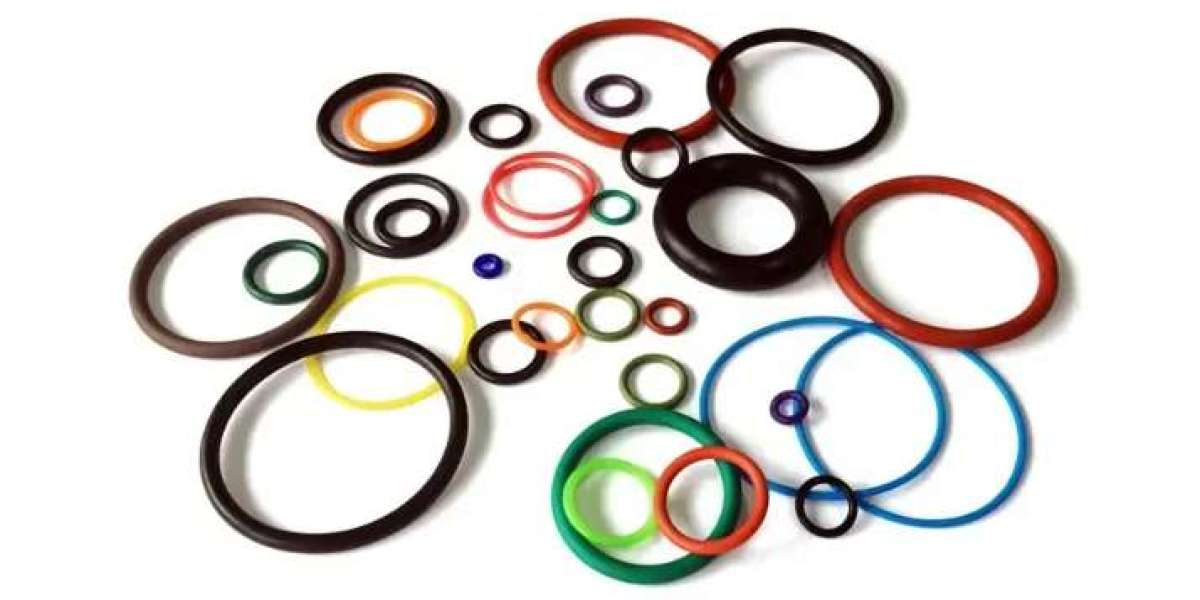O-rings are carefully designed to withstand high temperatures. In this blog post, Zhengli will share the manufacturing process of custom made heat resistant o-rings, exploring the materials, design considerations, and production steps involved in making these specialized seals.
Understanding Heat-Resistant O-Rings
Before we explore the manufacturing process, it's essential to understand what makes an O-ring heat-resistant. These seals are designed to maintain their elasticity and sealing properties at elevated temperatures, often ranging from 200°F to 1,000°F (93°C to 538°C) or more, depending on the material used.
Materials Used in Heat-Resistant O-Rings
1. Fluorocarbon Elastomers (Viton®): Known for their resistance to chemicals, oils, and high temperatures.
2. Silicone: Offers excellent heat resistance and flexibility.
3. Kalrez®: A family of perfluoroelastomers with exceptional heat and chemical resistance.
4. PTFE (Teflon®): While not an elastomer, PTFE is often used in high-temperature applications due to its non-stick properties.
5. Fluorinated Rubber: Provides good resistance to heat, chemicals, and weathering.
Design Considerations
The design of a custom-made heat-resistant O-ring is influenced by several factors:
1. Temperature Range: The material must be capable of withstanding the operating temperatures without degrading.
2. Chemical Resistance: The O-ring must resist the chemicals it will be exposed to.
3. Pressure: The design must account for the pressure differential it will seal against.
4. Dynamic vs. Static Applications: Dynamic applications require O-rings with higher resilience and resistance to wear.
5. Size and Shape: Custom dimensions and shapes may be necessary to fit specific applications.

Manufacturing Process
The manufacturing process of custom-made heat-resistant O-rings is a meticulous procedure that ensures quality and performance. Here's an overview of the steps involved:
Step 1: Material Selection
The first step is selecting the appropriate material based on the application's requirements. This decision is based on the temperature range, chemical resistance needed, and the specific conditions the O-ring will face.
Step 2: Mold Design
Once the material is chosen, a mold is designed to create the O-ring's shape. This involves creating a 3D model of the O-ring and then translating that into a mold that can be used in the manufacturing process.
Step 3: Material Preparation
The selected material is prepared for molding. This may involve mixing the base polymer with additives to enhance properties such as heat resistance, tensile strength, and resistance to chemicals.
Step 4: Molding
The material is then molded into the desired shape using one of several methods:
- Compression Molding: Used for high-precision O-rings where the material is compressed into the mold under heat and pressure.
- Transfer Molding: Suitable for more complex shapes, where the material is injected into the mold under pressure.
- Injection Molding: Ideal for large production runs, offering high efficiency and precision.
Step 5: Curing
After molding, the O-ring is cured to ensure it reaches its final properties. Curing involves heating the O-ring to a specific temperature for a set period, which can vary depending on the material.
Step 6: Post-Molding Operations
Once the O-ring has been molded and cured, it undergoes post-molding operations:
- Trimming: Removing excess material from the O-ring's edges.
- Inspection: Checking the O-ring for defects and ensuring it meets the design specifications.
- Cleaning: Removing any residue from the molding process.
Step 7: Quality Control
Rigorously testing the O-rings to ensure they meet the required standards is crucial. This includes:
- Physical Testing: Assessing the O-ring's resilience, tensile strength, and hardness.
- Chemical Testing: Ensuring the O-ring can withstand exposure to specific chemicals.
- Temperature Testing: Confirming the O-ring's performance within the specified temperature range.
Step 8: Packaging and Shipping
Finally, the O-rings are packaged to protect them from damage during shipping and are then dispatched to the customer.
Customization and Advanced Techniques
Custom-made heat-resistant O-rings may also incorporate advanced techniques such as:
- Fluorination: Enhancing the O-ring's surface to improve its heat and chemical resistance.
- Platinum Curing: Using platinum as a catalyst to achieve higher performance characteristics.
- Irradiation: Using gamma or electron beam irradiation to modify the material's properties.
Conclusion
The manufacturing of custom-made heat-resistant O-rings is a complex process that requires precision, expertise, and adherence to strict quality control measures. By understanding the materials, design considerations, and production steps, manufacturers can ensure that these critical components perform reliably in high-temperature environments. As industries continue to evolve and demand more from their sealing solutions, the role of custom-made heat-resistant O-rings will only grow in importance.








